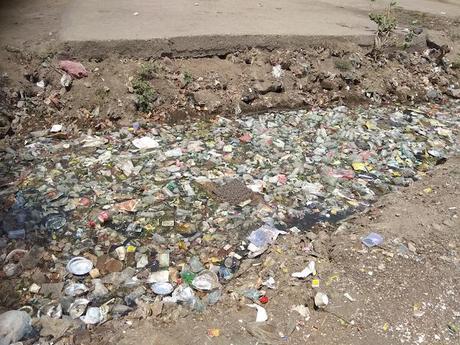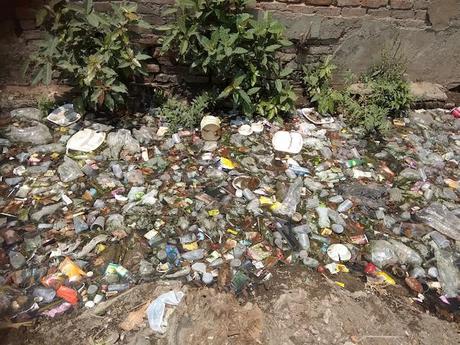What are Open Drains?
An open drain is an open channel, mostly found in urbanized areas and used for the discharge of rainwater. Rainwater collected by the channels is often directed to rivers or other water sources. Drains serve a good purpose in preventing flooding but when they lack covers as it is the case for open drains, solid and domestic wastes collect in them and may lead to blockage. As a result, they become a threat to the people living in the surrounding areas.
According to the information about the international distribution of open drains, the majority of them are found in middle and low-income countries. If the open drains are left unchecked, they become a health hazard to the neighboring population as they become a breeding ground for disease-causing parasites and other microorganisms. And when the rainy season begins, the open drains can rapidly spread water-borne diseases and infections. This article, therefore, seeks to further explain the dangers associated with open drains and possible solutions.

Harmful Effects of Open Drains
1. Spread of diseases
Control of water-related diseases depends on the effectiveness of removing excess surface and subsurface water. Health issues related to open drainages are broad and are reported as a result of exposure to agrochemicals, fecal waste, and water-related borne diseases.
Diseases caused by bacteria, protozoa, and viruses, for instance, are transmitted by agents that act as intermediate hosts, which usually thrive in waterlogged conditions provided by the open drains. A common disease-causing agent associated with open drains is the female Anopheles mosquito causing malaria.
Snail is another great example that commonly acts as an intermediate host for schistosomiasis. Some insects such as housefly can also act as vectors of diseases such as cholera and typhoid. It is, therefore, very common for water-borne infections in areas with open drains containing infected fecal matter.
2. Build-up of toxic chemicals
Surface runoff and leaching water from agricultural fields treated with pesticides as well as toxic chemicals from industries can easily find their way into the open drains. The resultant effect is the build-up of toxic chemicals in the water flowing in the drain, which threatens the survival of neighboring residents.
If the contaminated water comes into contact with the town’s source of water, for example, it will be contaminated with hazardous chemicals that may lead to adverse health effects such as liver damage, predisposition to certain cancers, birth defects for pregnant women, and development problems in children. People may also increase contamination by disposing of waste chemicals and other toxic materials into the open drains.
3. Road deterioration
Open drains often eventually get clogged due to deposits of silt and other solid substances thrown into the drain. During the rainy season, the clogging result in flooding that in turn destroy roads. And to make matters worse, the rate of road deterioration increases with an increase in granular moisture content.
Besides, most open drains are located alongside major roads within urban areas and if they are poorly maintained, the water may overflow onto the roads. The excess moisture extensively reduces the shear strength of the materials that are unbound and cause differential swelling on the subgrade soils that ultimately weaken the roads and pavements.
Other effects are stripping off the asphalt, cracking of roads and pavements, thaw weakening, and frost-heaving.
4. Contamination of water sources
Open drains are bound to receive domestic wastewater together with stormwater mixed with solid wastes, clinical wastes, silt, chemical waste and other contaminants that finally discharge into main water bodies such as streams, rivers, lakes, and oceans.
This contaminates the water sources and may make the water unfit for human consumption if proper water treatment is not done. Stagnant water in poorly constructed open drains can also lead to contamination of groundwater.
5. Breeding sites of mosquitoes
Open drains many at times contain stagnant water due to their open nature that encourage the buildup of silt and waste materials that in the long run clog the drainage channels. Such conditions create breeding sites for disease-carrying vectors, especially mosquitoes – known to thrive in open drains containing stagnant water.
Mosquitoes pose an adverse health risk in connection with the spread of malaria, dengue fever, yellow fever, and chikungunya. In India, 88% of dengue fever infections spread by the Aides mosquito are due to stagnant water in open drains.
6. Bad odor and unsightly
Dirty stagnant water in open drains has a bad odor that makes it very uncomfortable and unsightly for people living around the open drains. They can also cause inconveniences especially in neighborhoods with a lot of children as they might play near the infected water risking their health.
7. Cause unnecessary traffic jam
The poor drainage system, especially as a result of open drains, cause water logging problems on major roads in urban areas of developing countries. They also lead to the deterioration of roads and flooding. This causes disruption of normal urban traffic in the rainy seasons and when the city workers try to repair the open drains in an effort to prevent flooding.
8. Normal life disruption
Poor drainage system hampers the daily life of city dwellers. The inadequate drainage system and blocked open drains fail to convey the stormwater effectively leading to flooding and water logging in low-lying areas. The logged water disrupts the life of the inhabitants living around such areas. In addition due to poor drainage, traffic accidents are common when the roads are submerged.
9. Destruction of houses
The flood and water logging from blocked open drains can also pose a serious threat to the neighboring houses. The excess water causes oversaturation of soils which swells thereby destroying the foundations and reducing its stability. It will cause cracks in walls, damage landscape, cause premature aging and discoloration of the exterior brick and the concrete.
10. Soil erosion
Open drains can be a cause of soil erosion, especially in rural areas when. Water traveling at high speed in drains will carry away soil and silt. The uncontrolled speed of the water can lead to excessive erosion of the sides of the roads making them narrow and impassable for wide vehicles.
11. Affects agriculture
Open drains in agricultural lands are used to direct excess water away or bring in water for irrigation purposes. Poorly maintained drains will cause flooding which causes enormous damages in the agricultural land and the irrigation network. Excess water on farms in turn result in leaching of essential minerals, and destruction of the crops. Drainage ditches can also cause a shift in rice growth and quality of the soil.

Effective Solutions to Open Drains
1. Combined sewers and combined drains
In urban areas, the open drains can be incorporated into the sewerage system and covered together. This method can also be used in rural areas where the roads in the villages are paved and in areas that are prone to floods. The open drains would be buried and inlet chambers constructed at intervals along the roadsides to allow storm water’s entry.
They drains would be constructed to direct the water into a sewage treatment plant of a watercourse. The drains combined with the sewage system should not be overloaded and if the need arises, storm water drains should be constructed to direct the water to ponds or storage pool.
2. Constructing water drains in farms
Open drains in irrigated fields are considered the leading cause of schistosomiasis among farmers living around such areas. Therefore, there is a need to design and construct properly lined and graded drains with self-draining systems. Weeds must also be continuously removed from the drainage system to minimize wear and tear and the breeding grounds for the snails that are responsible for schistosomiasis infections.
3. Community education and participation
The community living around areas with open drains should be educated on the dangers of disposing domestic wastes among other contaminants and toxic chemicals in this drainage system. Proper disposal methods should be taught as well. Still, the education of the community alone is not adequate in alleviating this problem.
Instead, education should also encompass community participation in policy-making and decision-making in addressing open drain problems. Community participation can be done through public hearings, reports, social surveys, workshops, and public meetings.
4. Urban drainage planning and review of drainage designs
In the city areas, open drains are mostly as a result of poor urban design and planning that restricts the construction of spacious and well-covered drainage systems for channeling stormwater.
Some urban areas also highly depend on conventional open drainage designs. This calls for the need of such urban areas to review their urban planning and housing designs. Properly designed and planned open drains, for example, should be covered with concrete slabs to minimize diseases and infections.
5. Urban housing and planning legislation
Urban housing and planning legislation should be enacted to curb the harmful effects of open drains. Essentially, emphasis should be placed on policies focused on establishing minimum standards for the construction of urban draining systems as per the sustainable urban drainage system requirements.
6. Maintenance
The existing open drains should be maintained regularly to reduce the harmful effects associated with infections, diseases, and flooding. The drains that contain solid and silt deposits should be cleaned and unblocked. This practice should be done regularly to prevent future blockages and flooding.

